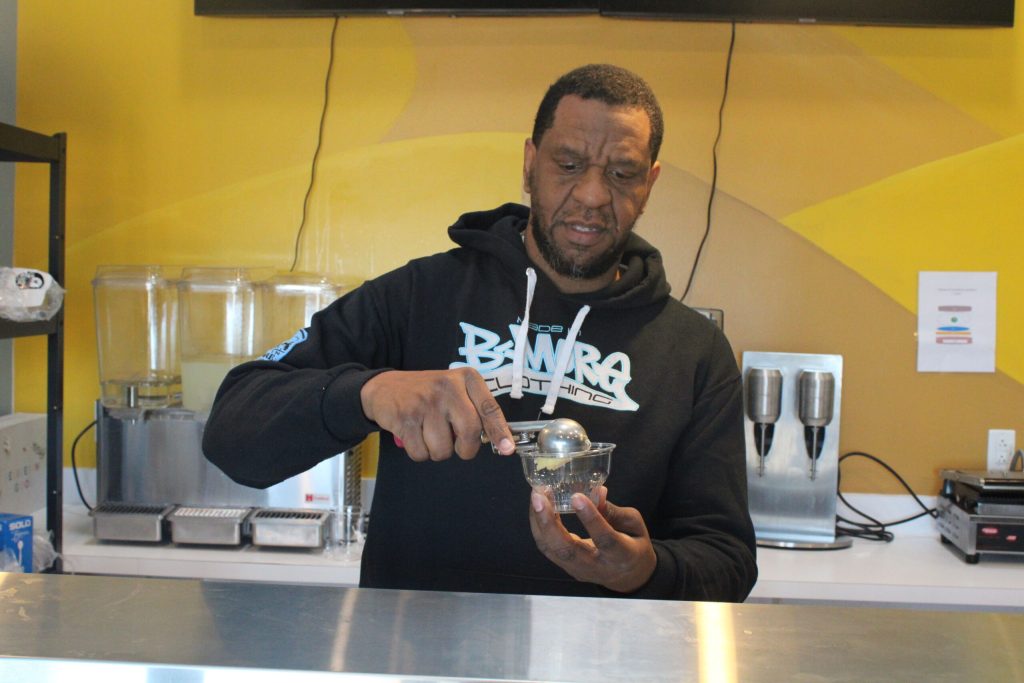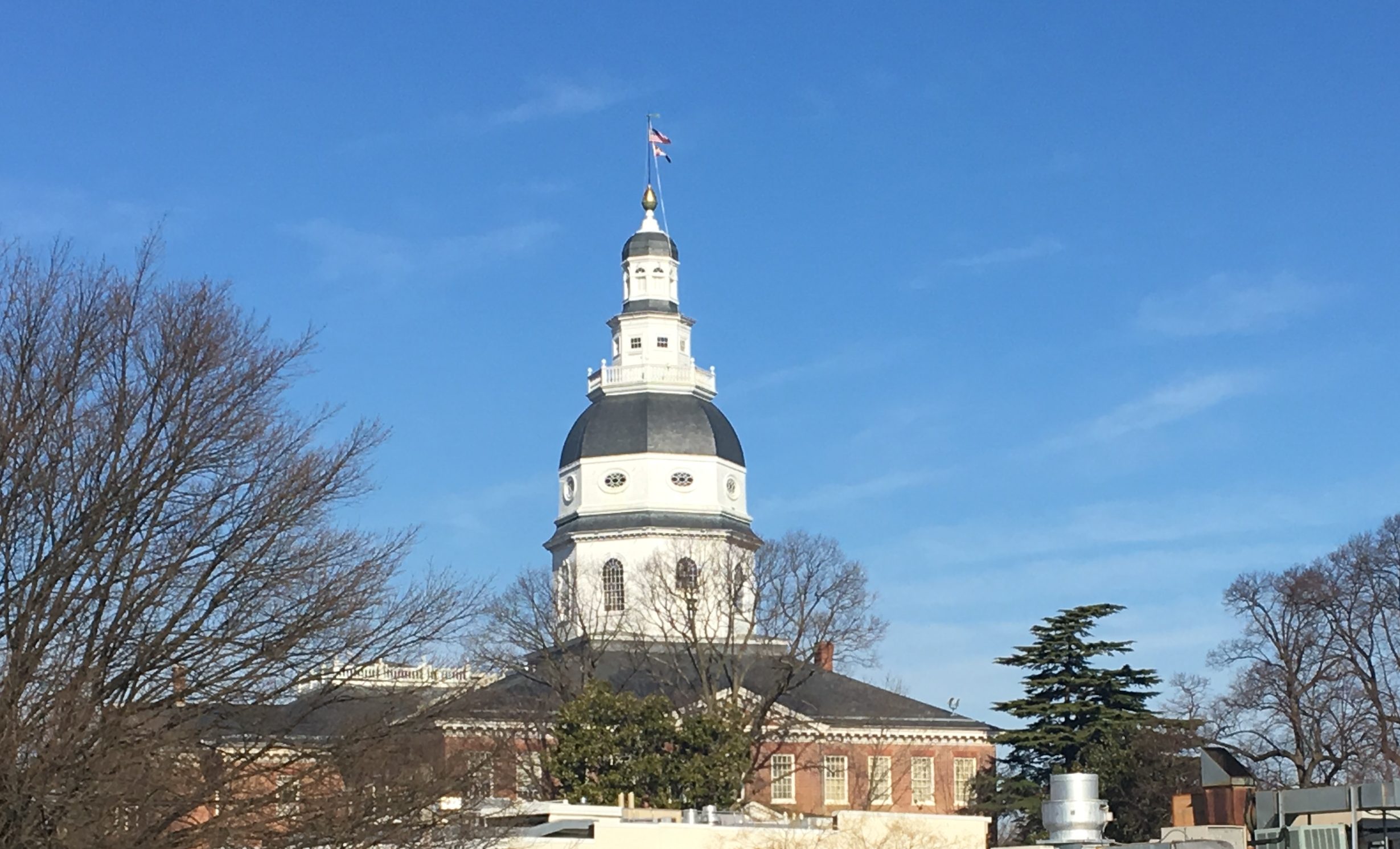Influx of millions boosts hope for Mondawmin small business owners
By SHAUN CHORNOBROFF
BALTIMORE – Through his more than three decades working at and now owning Gera Variety Discount Liquors, Mario Chang has been a mainstay in the Mondawmin area. He remembers a time when he or his parents were familiar with almost every customer of his family business, located about a half-mile from Mondawmin Mall.
“Knowing every person that walks in and walks out, there’s something to be said about that itself,” Chang said. “I think that’s part of the reason we’re still here.”
The Mondawmin area and its mall has struggled with outbursts of violence and closures of high-profile businesses, such as Target in 2018. The neighborhood was where unrest in Baltimore began following the 2015 death of Freddie Gray from injuries sustained in police custody.
An influx of activity aimed at reviving this important part of West Baltimore, headlined by a developer launching a reconstruction of the empty Target space and a $20 million federal grant dedicated toward improving the Mondawmin transit hub, has given residents hope.
The Mondawmin area of Baltimore is largely defined by its mall, founded in 1956 by famed developer and urban planner James Rouse. Mondawmin is a three-level mall featuring retailers such as Ross Dress for Less, Family Dollar, Foot Locker and Jimmy Jazz, and restaurants such as TGI Fridays, and Popeyes. Shoppers grocery store is also a major presence.
Violence in and surrounding Mondawmin Mall has hurt its reputation for decades and the management now requires anyone age 17 and under to be accompanied by a parent or an adult age 21 and older after 6 p.m. on weekdays. On April 13, a 7-year-old girl was shot twice while shopping with her mother.
An area of the city once known for its large homes and revered for its design, Mondawmin is today known for being located in one of Baltimore’s most disenfranchised areas. Among its challenges is a lack of stability for small businesses. From 2010 through 2020, the number of neighborhood businesses in the Greater Mondawmin Area fluctuated, peaking at 22 businesses per 1,000 residents in 2013 before reaching its low of 12 businesses in 2019, according to the Baltimore Neighborhood Indicators Alliance.
Equipped with a Metro station right outside the mall, and Coppin State University and Baltimore City Community College campuses nearby, Greater Mondawmin has the components necessary to create a stable environment for local businesses, neighborhood activists said.
“Everything’s been there. You talk to the actual neighbors that know the community, they know everything’s there,” said Chang, whose store is located 0.4 miles from the mall. “It’s just more or less getting the right people involved, getting the right investments happening.”
One significant project is a multimillion-dollar revitalization effort in the space once occupied by the Target, which was shut down after years of underperforming.
Developer Tim Regan, CEO of Whiting-Turner Contracting Company, purchased the former Target site in 2022, and launched a new project called The Village at Mondawmin, with the intention of turning it into a community mainstay. As of March 9, there are four confirmed tenants of The Village at Mondawmin: CareFirst, an insurance provider; Edenbridge Pace, a health-care provider; TouchPoint Baltimore, a community collaboration center co-founded by Regan; and Whiting-Turner.
Whiting-Turner is one of the state’s largest developers, with a reported $10.8 billion in revenue in 2022, according to the Baltimore Business Journal.
In June 2023, a group of Maryland’s U.S. senators and congressmen announced a $20 million grant to support the improvement of Mondawmin Station, one of Baltimore’s busiest transit hubs. The renovation of Mondawmin’s Frederick Douglass High School, which is planned by the city’s 21st Century School Building Program, has a budget of $118 million, according to the project’s website.

“This is all happening with city support at a time when the area is seeing a great deal of investment,” said Eli Lopatin, executive director of the Greater Mondawmin Coordinating Council.
Aside from the multimillion-dollar projects, some community groups are taking a ground-up approach. A half-mile from the mall, Rasheed Aziz runs the E.M.A.G.E. Center and Citywide Youth Development, where he teaches high schoolers and young adults entrepreneurial skills, launching brands in the center and creating job opportunities for young adults.
“We want the E.M.A.G.E. Center to be the catalyst now that we have a solid foundation [in Mondawmin],” said Aziz, whose business is amid a massive expansion.
Aziz has partnered with the West North Avenue Development Authority (WNADA), a group attempting to revitalize a historic part of Baltimore. Teresa Stephens, the organization’s public affairs officer said, “Mondawmin is a diamond in the rough.”
The West North Avenue Development Authority is seeking to have 31% of businesses owned by minorities.
Aside from building up businesses, the Mondawmin neighborhood faces a challenge in reducing local housing vacancies. Lopatin said he’s already noticing people emigrating from other major cities into the Mondawmin area. From 2010 through 2020, the percentage of vacant houses in Greater Mondawmin rose from 10.29% to 13.93%, according to the Baltimore Neighborhood Indicators Alliance. Bordering areas such as Sandtown-Winchester/Harlem Park and Upton/Druid Heights had triple Mondawmin’s 2010 vacancy rate.
Chad Williams, the executive director of the West North Avenue Development Authority, said one strategy to combat residential vacancies would be to offer leases as a transition to ownership for potential residents.
Williams said the low price of real estate in Mondawmin is a clear benefit for potential businesses. “The income level might not be the same as in certain parts of the city. However, the growth opportunity is there,” Williams said. “So it’s best to get in now.”
Some Baltimore business owners, such as videographer Julian Hamer, who lives in the Mondawmin area, are wondering who will stand to benefit from this influx of money.
“I’m keeping my eyes on everything that everyone’s doing, where money’s going and flowing,” said Hamer, co-founder of Fearless Video, which has produced work for Vice President Kamala Harris, among others. Hamer wants to know “who’s having opportunities, who is being handed some of these opportunities, and who’s able to leverage these opportunities.”

Capital News Service is a student-powered news organization run by the University of Maryland Philip Merrill College of Journalism. With bureaus in Annapolis and Washington run by professional journalists with decades of experience, they deliver news in multiple formats via partner news organizations and a destination Website.

